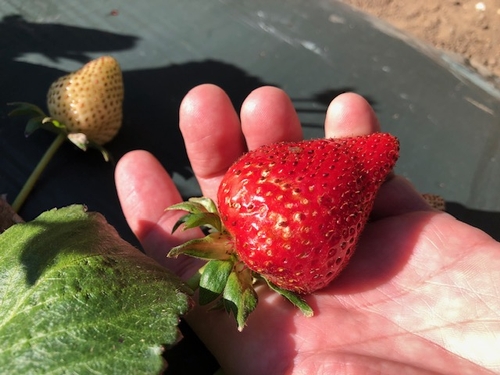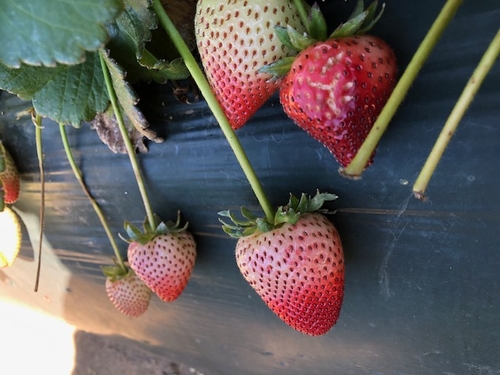The rain on Saturday (about 0.6" total by my gauge), did present a setback for area strawberry growers. Not too much, but still damage has been evident, it is worth noting that that for many varieties grown on the Central Coast water accumulation over 0.5" inches means damage for mature fruit.
I happened across the damage pictured below on my wanderings through the fields last week, and it occurred to me it might be interesting to investigate why we get this cracking of the mature fruit. I tended to think fruit would crack because, confronted with more water than necessary from the rain, the plant to which the fruit is attached is forced to pull up more water than usual, inflating it faster than it can bear and leading to cracks.
This former thinking of mine is totally wrong. As outlined in the super informative work published in the paper linked below, the story of fruit cracking in strawberry is rather all about osmosis, which as most of you know is the process by which water passes from a solution of a lower concentration of dissolved materials into one of a higher concentration of dissolved materials. Meaning that rain, being essentially pure water with almost nothing dissolved in it, landing on a mature strawberry fruit loaded with solutes (mostly sugars), is going to get pulled pretty effectively by osmosis into the fruit, swelling the areas under the raindrops beyond the capacity to stretch and form cracks. Carrying this logic of osmotic potential forward also explains why less mature fruit, with their lower concentrations of solute (sugars), tend to avoid damage in rainstorms.
Very nice thing to learn about today. Full article here:
Water Soaking in Berries: Triggers, Factors and Mechanisms
Attached Images:


